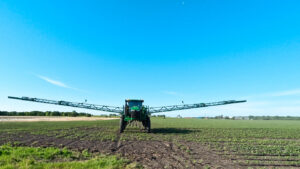Editor’s Note: Kenneth Zuckerberg is a senior research analyst in Rabobank’s Food & Agribusiness Research & Advisory Group. He recently attended an agtech industry event and here shares his key takeaways and views on the future of the agtech startup market.
There is a disconnect between what many agtech startups are selling and what growers are willing to buy. This leaves three options for these new companies: change their business models, pursue partnerships to grab market share, or exit the marketplace entirely.
That was just one of the important observations regarding the current crop of venture-backed ag startups on a panel I moderated at the 2016 World Agri-Tech Investment Summit in San Francisco.
The panel — Investment Strategies for Disrupting the Status Quo at Scale — focused on strategies for investing in scalable agriculture-related technologies and featured five high-profile institutional venture investors: Andy Ziolkowski from Cultivian Ventures, Brook Porter from Kleiner Perkins Caufield & Byers, Vipula Shukla from The Bill & Melinda Gates Foundation, Andy Wheeler from Google Ventures, and Vishal Vasisth from Obvious Ventures.
The aim of the panel was to educate the audience about each firm’s investment strategy, outlook and rationale for committing capital to agtech, which is a growing niche within the food and agriculture industry has attracted around $7 billion of investor funds in the past two years, according to AgFunder data.
One of the most interesting areas of discussion was each panelist’s assessment of the seemingly robust growth opportunities for investing in disruptive technologies. These opportunities are tempered by the monumental challenges of marketing to the highly suspicious target customer base that is US farmers, they argued. So, we left with a cautious outlook and the belief that a ‘moment of truth’ is near for the current crop of agtech start-ups.
Taking a balanced view, we believe there continues to be a strong business case for the collection and analysis of farm level data and its subsequent use in helping farmers with crop planning, enterprise risk management, and grain marketing.
On the flipside, big data can be a double-edged sword as evidenced by the fact that farmers are currently burdened with an enormous amount of disjointed ‘big data’ — gathered from different devices and stored in different places — that cannot be used effectively or quickly.
The root cause of this data burden is twofold: First, most farms lack proper technological infrastructure — namely farm management information and ERP systems — and second, most APIs (application programming interfaces) are still restrictive, so third-party vendor products and services cannot be properly integrated.
Taken together, there is a disconnect hindering customer adoption, which could present challenges as the current crop of start-ups goes into later stage funding rounds.
Faced with these pressures, vulnerable companies will be forced to pivot their business models towards grower needs, pursue strategic joint ventures or withdraw from the marketplace. As always, time will tell.
What do you think? Get in touch on [email protected]




